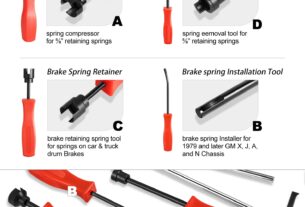If you’re an electronics enthusiast or professional, then circuit tools are likely a crucial part of your work. From designing circuits to testing and troubleshooting them, these tools help to ensure that electronic devices run smoothly and efficiently. In this article, we’ll explore the different types of circuit tools available, their functions, and how they can benefit your electronic design projects.
[h2]Types of Circuit Tools[/h2]
There are several types of circuit tools available, each with its unique function. Some of the most common circuit tools include:
[h3]1. Oscilloscopes[/h3]
Oscilloscopes are essential tools for analyzing electrical signals in circuits. They allow you to visualize waveforms and measure voltage levels accurately. With an oscilloscope, you can determine if a signal is distorted or if there’s noise present in the circuit.
[h3]2. Multimeters[/h3]
Multimeters are versatile tools that help you measure various electrical parameters such as voltage, current, and resistance. They come in handy when checking if a circuit is functioning correctly or diagnosing faults.
[h3]3. Logic Analyzers[/h3]
Logic analyzers are specialized tools used for debugging digital circuits. They allow you to capture and analyze digital signals within a circuit, making it easier to identify issues with timing or logic errors.
[h3]4. Power Supplies[/h3]
Power supplies provide the necessary voltage and current required by electronic devices to operate correctly. They come in various forms, including linear power supplies, switching power supplies, and battery chargers.
[h3]5. Function Generators[/h3]
Function generators produce different types of waveforms that simulate real-world signals used in electronic systems. They’re useful for testing circuits’ responses to specific stimuli or creating test signals.
[h2]Benefits of Circuit Tools[/h2]
Using circuit tools in electronic design projects comes with several benefits, including:
[h3]1. Improved Accuracy[/h3]
Circuit tools allow you to measure and analyze electrical signals with greater accuracy than manual methods. This precision helps you detect even minor faults in a circuit, leading to better overall performance.
[h3]2. Increased Efficiency[/h3]
With circuit tools, you can quickly diagnose issues in a circuit and fix them before they escalate into more significant problems. This saves time and resources that would otherwise be spent troubleshooting complex issues.
[h3]3. Enhanced Safety[/h3]
Electronic devices can be hazardous if mishandled or misused, but circuit tools help prevent accidents by providing accurate readings and alerts for potential hazards.
[h2]Conclusion[/h2]
Circuit tools are essential components of electronic design projects, helping to ensure that circuits function correctly and efficiently. By using these tools, you can improve accuracy, increase efficiency, and enhance safety in your work environment. Whether you’re an electronics enthusiast or professional, having access to the right circuit tools can make all the difference in the success of your projects.
Reference: https://en.wikipedia.org/wiki/Circuit_tester




